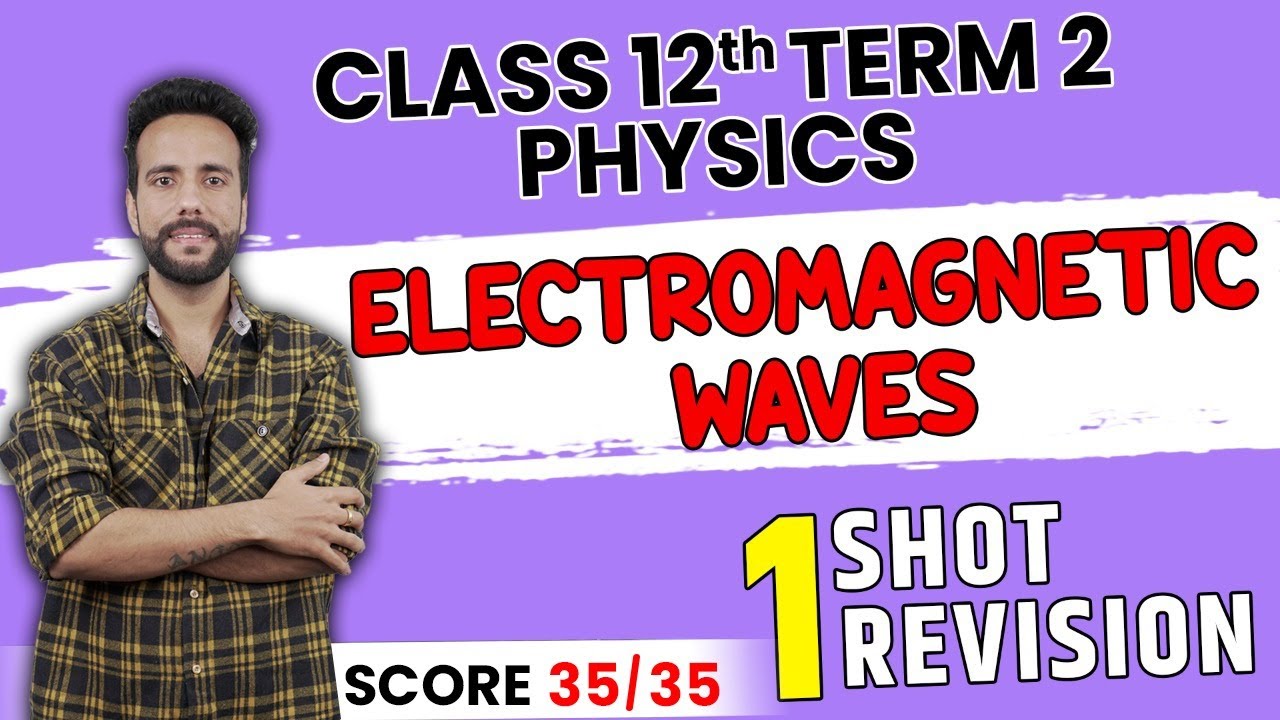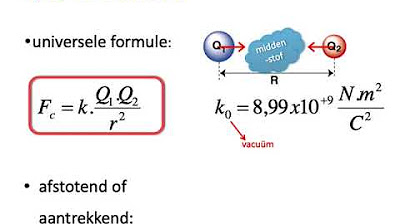8.02x - Module 12.01 - EM Plane Waves - Poynting Vector - E-fields - B fields - Wavelength
Summary
TLDRThe video script discusses the fundamental principles of traveling electromagnetic waves, emphasizing the importance of Maxwell's equations and their consequences. It explains how the electric field vector (E) and magnetic field vector (B) are perpendicular to each other and the direction of propagation, always in phase, and how the amplitude of the magnetic field (B0) is related to the electric constant (ε0) and the speed of light (c). The script provides a detailed example of calculating properties of an electromagnetic wave with a frequency of 4.0 * 10^13 Hz, including its wavelength, wave number, and direction of propagation. It also illustrates how to determine the direction of the electric field vector when given the magnetic field vector's oscillation and propagation direction, highlighting the significance of the signs in the cosine function for wave propagation.
Takeaways
- 🧲 Maxwell's Equations: The lecturer emphasizes the importance of Maxwell's equations in understanding traveling electromagnetic waves.
- 🌐 Wave Propagation: The E vector and B vector are always perpendicular to each other and to the direction of wave propagation.
- 🔄 Phase Relationship: E and B are in phase, meaning they reach their maximum and zero values at the same moments in time.
- 🌌 Electromagnetic Wave in Vacuum: The amplitude of the magnetic field (B0) is related to the amplitude of the electric field (E0) through the equation B0 = E0/c.
- 🚀 Energy Flux: The energy per second flowing through each square meter is given by the cross product of E and B vectors divided by the magnetic constant (μ0).
- 🌀 Wave Characteristics: The wavelength (Lambda) is related to the speed of light (c) and the period of oscillation, and the wave number (k) is the reciprocal of the wavelength.
- 🔢 Frequency and Wavelength: Given a frequency of 4.0 * 10^13 Hz, the angular frequency (Omega) and wavelength (Lambda) are calculated, identifying the wave as infrared radiation.
- 📍 Direction of Propagation: The direction of wave propagation is specified as the positive Y direction, with the B vector oscillating in the X direction.
- 📉 Oscillation and Propagation: The B vector's oscillation is described by a cosine function that includes the angular frequency and wave number, crucial for the wave's directionality.
- 🛑 Significance of Signs: The correct signs in the cosine function are essential for the correct direction of wave propagation; changing signs alters the direction.
- 🔄 Changing Propagation Direction: To change the direction of wave propagation, one must adjust the signs in the cosine terms and ensure the direction of E cross B is consistent with the new direction.
Q & A
What are the fundamental properties of electromagnetic waves as described in the script?
-The script describes that the electric field vector (E) is always perpendicular to the magnetic field vector (B), and both are perpendicular to the direction of propagation. Additionally, E and B are always in phase, meaning they reach their maximum and zero values at the same moments in time.
What is the relationship between the amplitude of the magnetic field (B0) and the electric field (E0) in a vacuum?
-In a vacuum, the amplitude of the magnetic field (B0) is related to the electric field (E0) by the equation B0 = E0/c, where c is the speed of light.
What does the pointing vector represent and how is it calculated?
-The pointing vector represents the amount of energy per second flowing through each square meter of a particular surface. It is calculated as the cross product of the electric field vector (E) and the magnetic field vector (B), divided by the permeability of free space (μ0), or E x B / μ0.
What is the significance of the wave number (k) and how is it related to the wavelength (λ)?
-The wave number (k) is a measure of the number of wavelengths per unit length and has units of 1/meter. It is related to the wavelength (λ) by the equation k = 2π/λ.
How is the frequency of electromagnetic radiation related to its wavelength?
-The frequency (f) of electromagnetic radiation is inversely related to its wavelength (λ). This relationship is given by the equation λ = c/f, where c is the speed of light.
What is the significance of the angular frequency (ω) in the context of the script?
-The angular frequency (ω) is related to the frequency of the electromagnetic wave and is used to describe the rate of oscillation. It is calculated as ω = 2πf, where f is the frequency of the wave.
What is the frequency given in the script, and how does it relate to the angular frequency and wavelength?
-The frequency given in the script is 4.0 * 10^13 Hz. The angular frequency (ω) is then 2.5 * 10^14 rad/s, and the wavelength (λ) is 7.5 * 10^-6 m, which corresponds to infrared radiation.
What is the direction of propagation (V) and the oscillation direction of the magnetic field (B) vector as described in the script?
-The direction of propagation (V) is in the positive Y direction. The magnetic field (B) vector oscillates in the X direction, as indicated by the cosine function with a time-dependent term and a spatial term with a wave number k.
Why is the sign in front of the wave number (k) in the expression for the magnetic field (B) vector crucial?
-The sign in front of the wave number (k) is crucial because it determines the direction of wave propagation. A positive sign indicates propagation in the positive Y direction, while a negative sign would indicate propagation in the negative Y direction.
How does the direction of the electric field (E) vector relate to the magnetic field (B) vector and the direction of propagation (V)?
-The electric field (E) vector must be in a direction such that the cross product of E and B is in the direction of propagation (V). In the script's example, E is in the positive Z direction, ensuring that E x B is in the positive Y direction, consistent with the wave propagating in the positive Y direction.
What changes would be necessary to change the direction of propagation from positive Y to negative Y?
-To change the direction of propagation from positive Y to negative Y, the signs within the cosine terms for both E and B would need to be changed to be the same (both positive or both negative), and the direction of the electric field (E) vector would need to be adjusted so that E x B is in the negative Y direction.
Outlines

This section is available to paid users only. Please upgrade to access this part.
Upgrade NowMindmap

This section is available to paid users only. Please upgrade to access this part.
Upgrade NowKeywords

This section is available to paid users only. Please upgrade to access this part.
Upgrade NowHighlights

This section is available to paid users only. Please upgrade to access this part.
Upgrade NowTranscripts

This section is available to paid users only. Please upgrade to access this part.
Upgrade NowBrowse More Related Video

Maxwell's Equations And Electromagnetic Theory: A Beginners Guide

CBSE Class 12 Physics | Electromagnetic Waves in One Shot Revision | NCERT EMW Short Explanation

We1 EM ww

MK Elektrodinamika - Persamaan Maxwell

ELECTROMAGNETIC WAVES In 20 Minutes || Complete Chapter For JEE Main/Advanced

Maxwell's Contributions to Electromagnetism // HSC Physics
5.0 / 5 (0 votes)